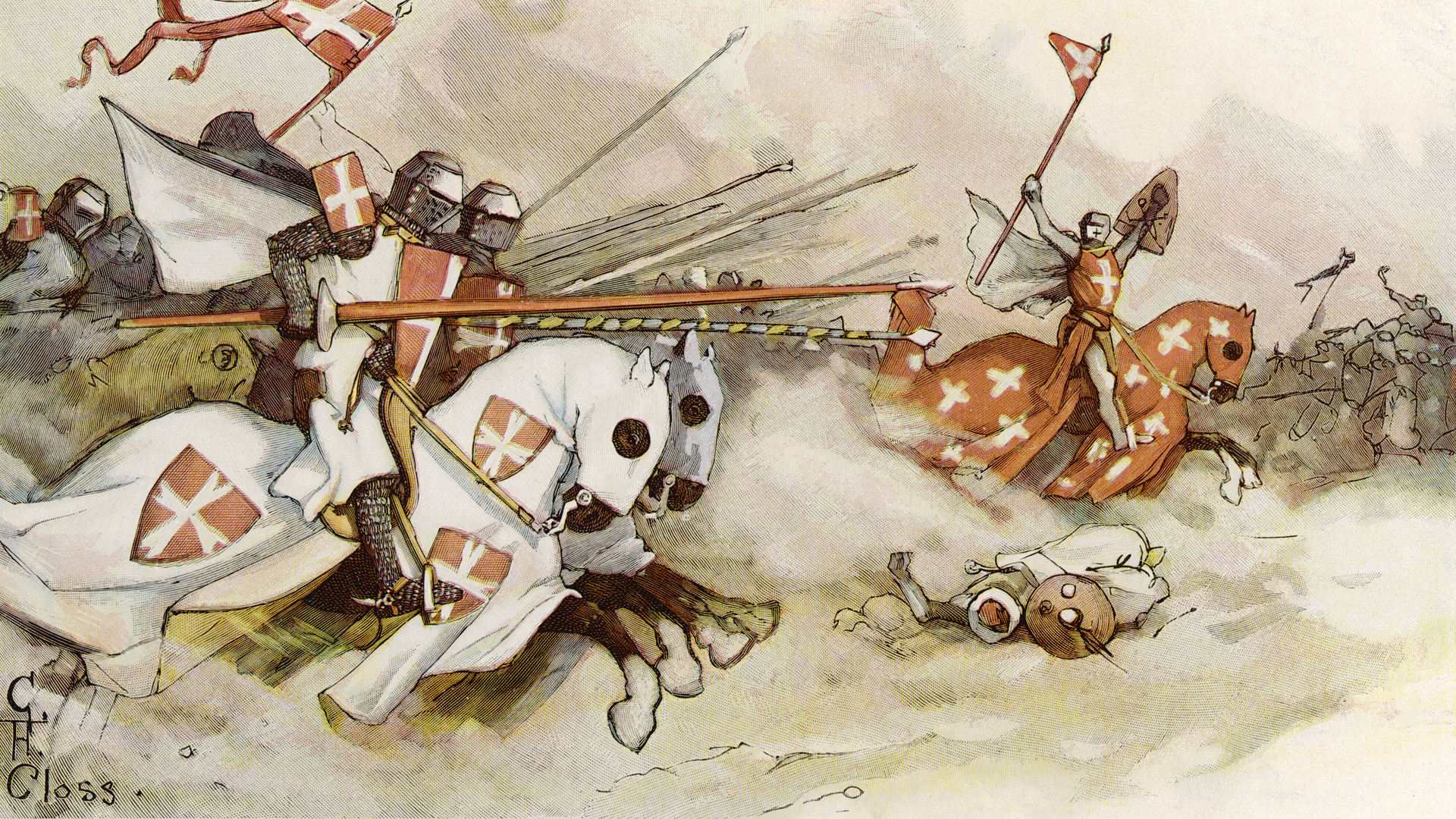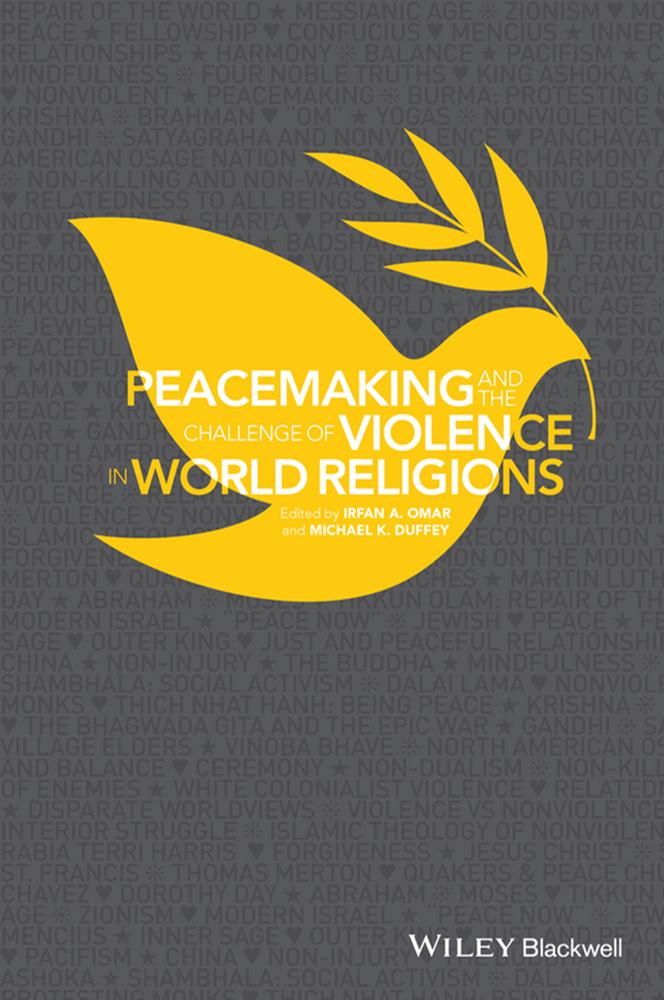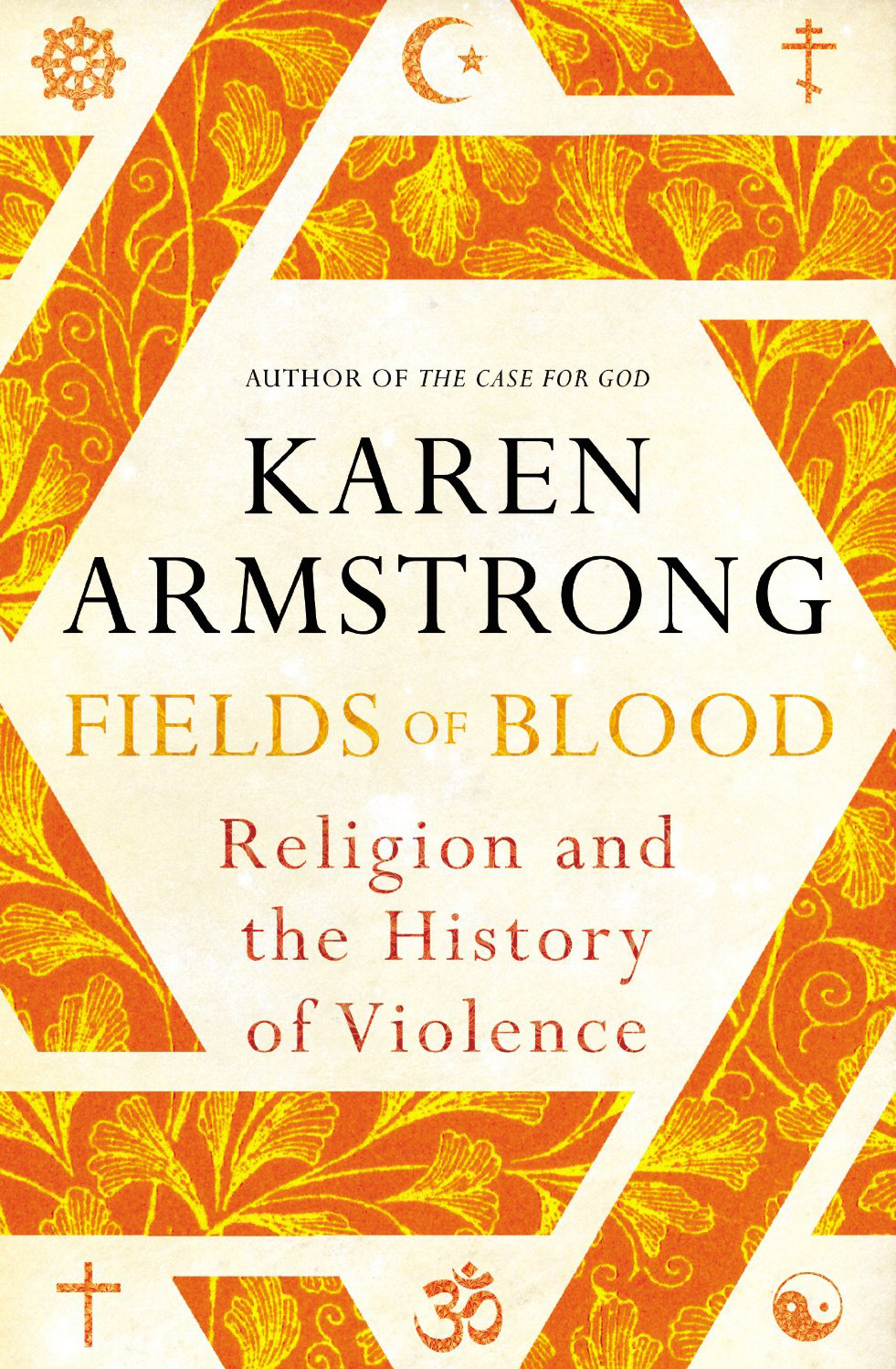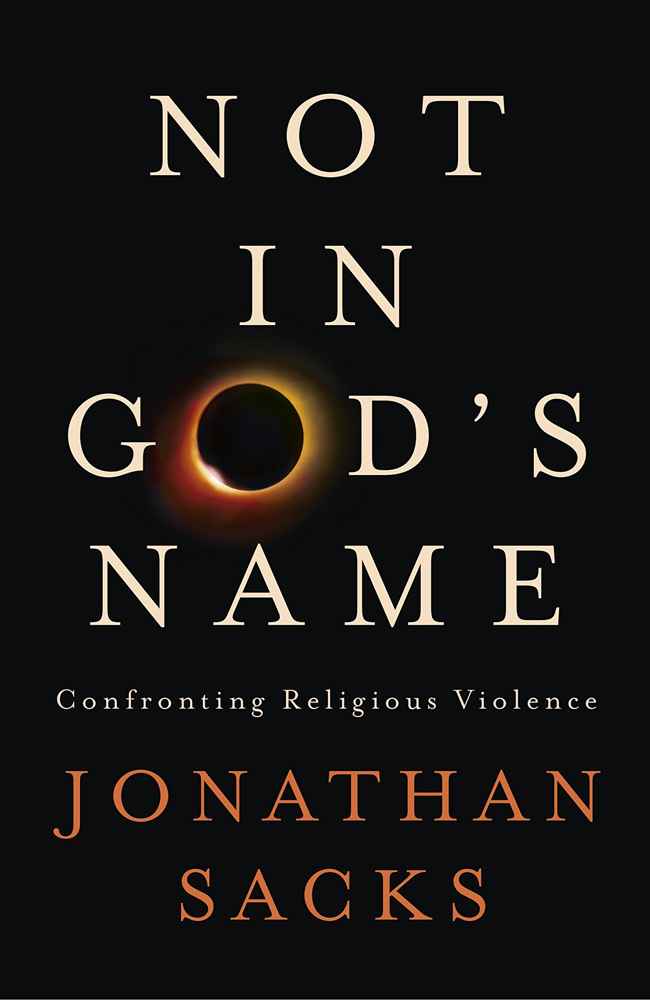Violence: Is Religion the Problem?
In the face of growing religious extremism, it’s tempting to blame religion itself for the violence and wars that plague the world. But is that fair? Vision reviews three books that address and analyze this highly divisive issue.
Peacemaking and the Challenge of Violence in World Religions
Irfan A. Omar and Michael K. Duffey (editors). 2015. John Wiley & Sons, Chichester, UK. 256 pages.
Fields of Blood: Religion and the History of Violence
Karen Armstrong. 2014. Alfred A. Knopf, Random House, New York. 512 pages.
Not in God’s Name: Confronting Religious Violence
Jonathan Sacks. 2015. Schocken Books, Penguin Random House, New York. 320 pages.
Religion, say its gainsayers, is the primary cause of violence and war in human history. This is not a new claim. The secular state’s “creation myth,” writes Karen Armstrong, declares that religious drama following the Reformation had “so inflamed Catholics and Protestants that they slaughtered one another in senseless wars.” The immediate violence was contained only through the separation of religion from politics.
In the face of continuing debate on the subject of religiously inspired violence, three recently published books seek to add clarity to the dialogue: Does religion in fact cause much of the world’s hostility and aggression?
Peacemaking and the Challenge of Violence in World Religions, edited by Irfan A. Omar and Michael K. Duffey, is a broad-based review of “violence committed in the name of religion and what religions say can be done to prevent it.” Omar, a well-published theology professor, focuses on the relation between Islam and other faiths. Duffey, also a well-published professor, specializes in theological ethics centering on issues of justice and peace. The editors offer seven essays by scholars of five major world religions—Islam, Christianity, Hinduism, Buddhism and Judaism—as well as the philosophy of Confucius and the belief system of the Native American Osage Nation. The essays describe each religion’s primary teachings (as they relate to peace and peacemaking) and then examine adherents’ participation in violence and war in light of those teachings.
Karen Armstrong is a prolific British author, commentator and educator who offers an informative and compelling discussion of the subject in Fields of Blood: Religion and the History of Violence. Focusing on the Abrahamic faiths of Islam, Judaism and Christianity, Armstrong argues that to say religion has a “single, unchanging, and inherently violent essence is not accurate.”
Jonathan Sacks’s stimulating Not in God’s Name: Confronting Religious Violence is a thought-provoking and fluid discussion of the politicized religious extremism that grips the Middle East today and is being violently exported to France, America and the West. Sacks is a rabbi, philosopher, scholar of Judaism and author of many books. This engaging work offers not only a multifaceted and layered account of violence drawing from history, psychology, sociology, group dynamics and religion, but also a reinterpretation of relevant narratives in the Hebrew Scriptures.
Each of these three books reveals that, while religion may be connected to violence and conflict, that connection throughout history has been mostly indirect. Conflicts occur more often over resources, territory and power than over a religious imperative. The charter documents of every major religion (that is, their sacred writings) are overwhelmingly weighted in the direction of peace. However, given the right chain of events, humankind can and does descend to extreme expressions of violence including terrorism—a tragically flawed expression of religious belief.
The Peace Imperative
In Peacemaking and the Challenge of Violence in World Religions, the various contributors each survey a faith group and from its own documents present evidence to demonstrate that peace and the rejection of violence are unquestionably chief imperatives of the world’s major religions. Despite this, Omar notes, religions have at times permitted violence. But this has been mostly governed by restrictive conditions, such as self-defense or combating broad-based wrongdoing or evil.
Unfortunately the editors and essayists neglect to address the blurring of religion and government in premodern history (before the 17th century), a period generating some of the loudest accusations about the religious roots of war. During this time the state often coopted religion—the strongest emotional unifier and motivator of a society—for political, territorial and economic gain through violent action. Had the book included such a discussion, the editors might have greatly clarified some of the confusion over religion’s link to violence.
Omar does point out that any justification of current “religious violence” on the basis of the Qur’an amounts to a false interpretation of that text. For example, the term jihad, used by some extremists to sanction violence, simply means “struggling for God” and is similar to the New Testament term strive. Yet it has been kidnapped and falsely applied. Omar contends that the phrase needs to be reclaimed by moderate voices.
“Even justified armed struggle or ‘just war’—at least from the quranic perspective—may not be termed a jihad.”
Still, he leaves unresolved a significant question regarding jihad: Given the strong admonitions for peacemaking contained in the Qur’an, why has Islam been more often associated with violence than most religions?
While offering relevant and helpful knowledge on each religion’s foundational approaches to peace, some readers may stumble into substantive barriers because the essayists seem not always to represent a consensus view of the faith community they represent. For example, Duffey’s essay on Christianity denies that Christ’s sacrifice offers salvation from the penalty of death, because “all have sinned and fall short.” That meaning, according to Duffey’s interpretation, would require a harsh and punishing God. Rather, he asserts, Christ’s death was for the purpose of our salvation from violence in the present, which he calls “a living hell.” Considering the preponderance of scriptural evidence to the contrary, this distracts from an otherwise beneficial discussion of the New Testament perspective on peace.
The authors point to a need for greater cross-faith cooperation and less religious-community insularity, but they stop short of offering concrete advice on how to move world governments to action in the abatement of violence.
Church and State
Armstrong’s Fields of Blood establishes that violence, rather than being caused by religion, was early embedded in the structural nature of developing civilizations and nation-states through competition for resources, economic expansion, maintenance of internal order, and border protection. Quoting British historian Perry Anderson she writes, “War was possibly the most rational and rapid single mode of economic expansion . . . available for any given ruling class.”
Throughout premodern history, “religion had no separate institutional existence” but was woven into the governmental, social and domestic cloth of society. Conflicts branded as religious were often political struggles for power and territory but given a sacred patina as rulers justified their aggression as a mission from God. Armstrong remarks that the move to jettison religion from politics may have created the secular state but not a state free from violence.
“The problem lies not in the multifaceted activity that we call ‘religion’ but in the violence embedded in our human nature and the nature of the state. . . .”
The shift from an agricultural society to the industrial age saw an increase in secularism, thanks in large part to the Enlightenment. But state structural violence did not wane, as demonstrated by the birthing violence of the French Revolution and the reality of ongoing wars (the vast majority divorced from any religious cause) throughout the 19th and 20th centuries.
Armstrong supports her position with a fascinating review of history, tracing the development of civilizations in tandem with religion while detailing the extraordinarily interwoven political, social, economic and sacred threads that make up the fabric of any society. Even the Crusades and Europe’s Wars of Religion are revealed as complex and layered rather than simply an extreme exercise in religious fervor.
However, Armstrong’s view of religion as benign in the causation of war and violence does not adequately address religion as the X factor in many conflicts. For example, the West’s intrusion in and support of unpopular secularist regimes in recent decades, like earlier colonial activities in the Middle East, has caused a backlash of Muslim fundamentalism because core Islamic values are believed to be threatened. Religion, while not the prime motivator, is certainly at play.
The Brother Chronicles
In Not in God’s Name Sacks declares that “violence has nothing to do with religion as such. It has to do with identity and life in groups.” Any connection to religion is oblique at best and not at all straightforward.

While religion is rarely the true cause of war, it is often invoked by those who fight.
Photo: Gleb Garanich / Reuters
Rather, violence exists because man is a social entity given to forming groups, tribes and nations that meld into a culture. Personal identity is sought and developed within this group culture. We exercise altruism toward those within our group and aggression against those outside the group. This in-group altruism and out-group hostility produces conflict and war as groups clash over secular issues of power, territory, scarce resources, and identity itself. Religion enters the mix when individual adherents make it part of their group identity.
From this foundation Sacks takes the reader through the progressive steps that produce the politicized extreme terrorism of today, citing among other factors a dualistic all-good vs all-bad world view, and the necessity of creating a scapegoat as the source of all the bad. He brands the resulting phenomenon—the indiscriminate murder of children, of people at prayer and of other innocents—as “altruistic evil: evil committed in a sacred cause, in the name of high ideals.” It is in this extreme and theologically incorrect application of the various charter faith documents that religion is connected to violence and terror. Sacks comments that “the greatest threat to freedom in the postmodern world is radical, politicised religion.”
“What makes Judaism, Christianity and Islam unusual is that their narratives of identity are stories of sibling rivalry that assign a secondary, subordinate role to the others.”
He suggests that the answer to violence is found in the Hebrew Scriptures and proposes a nontraditional counternarrative to the brother chronicles of Genesis. Rather than being a description of sibling rivalry and of the selection and rejection of one brother or people over another, he says, the true reading of these accounts is that, despite the conflict, God chooses all; the Genesis brothers (Isaac and Ishmael, Jacob and Esau, Joseph and his 11 bothers) ultimately live together in peace. The clear message, says Sacks, is that humanity can do the same today.
The rabbi calls for “an international campaign against the teaching and preaching of hate” based on “peaceful modes of conflict resolution” and on the spiritual value that “as you behave to others, so will others behave to you.” We can do otherwise, of course, but not in God’s name.
Though compelling in his analysis, Sacks, too, stops short of offering a practical process that will lead to a world without violence. An international campaign to void hatred is a captivating idea, but where to start? And how will governments embrace the necessary changes? Sacks offers an in-depth examination and diagnosis, but not a cure.
The Takeaway
The determined movement toward secular government that began in the late 18th century has done little to stem violence within and between nations. Religion is typically not the cause of violence; violence and conflict are structurally embedded in nations’ identities. Thus, rather than engage in nonviolent international conflict resolution, they protect borders, advance national agendas and, paradoxically, strive to maintain internal and external peace through militaries capable of worldwide destruction.
But it is not only the nature and values of the state that produce violence. The state reflects the attitudes of the governed. People seek identity within groups, which by nature tend to adopt in-group tolerance and out-group hostility and aggression.
Both Sacks and Armstrong address the individual responsibility for ending violence. Sacks makes it clear that violence, even so-called altruistic evil, is proscribed by the command to “love the neighbor and stranger.” Armstrong repeats the words of “sages” who proclaim that society must develop a “concern for everybody” and treat others as we would like to be treated. It is the individual who must embrace and apply this type of true religion. To do otherwise ultimately dooms society.
These expressions about individual responsibility are, of course, found throughout the Bible: “You shall love your neighbor as yourself” (Mark 12:31). “Whatever you want men to do to you, do also to them; for this is the Law and the Prophets” (Matthew 7:12). They determine how personal relationships are built and expressed. They also form the basis for the peaceful function of society. Until we all learn to change our behavior and accept, on a very personal level, the responsibility of absorbing and applying this message, violence will continue unabated.





